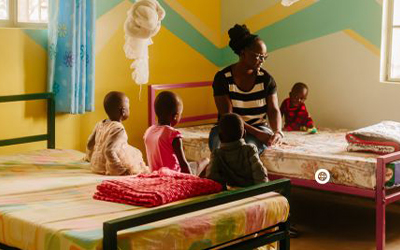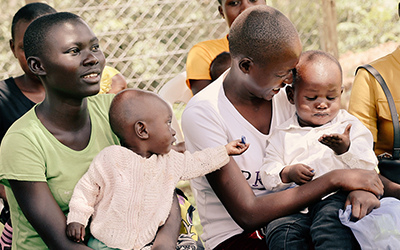How often do you simply want to throw in the towel?
Why do things take so long? Will we ever be able to make a difference? Surely I’ve given it my best shot, so why do I feel so hopeless?
Do these questions and sentiments seem familiar? Have you muttered them under your breath while listening to a passionate sermon or motivational speech encouraging you to donate, support, or God forbid, actually go to some 3rd world country and help?
You are not alone. These are realistic and even valid questions because unfortunately the answers often show up the inefficiencies and weaknesses of those well intentioned people. They might have meant well, they had a plan, they made a difference, but in many cases they were not sustainable.
As Courtney Martin (author of Do It Anyway and The New Better Off) writes in her essay “Seductive Reduction”:
There are so many examples. As David Bornstein wrote in The New York Times, over four decades of Westerners working on clean water has led to “billions of dollars worth of broken wells and pumps. Many of them functioned for less than two years.”
One classic example: in 2006, the U.S. Government, The Clinton Foundation, The Case Foundation, and others pledged $16.4 million to PlayPump, essentially a merry-go-round pump that produced safe drinking water. Despite being touted as the (fun!) answer to the developing world’s water woes, by 2007, one-quarter of the pumps in Zambia alone were in disrepair. It was later estimated that children would need to “play” for 27 hours a day to produce the water PlayPump promised.
We are easily seduced by aid projects that promise play. The SOCCKET, an energy-generating soccer ball, made a splash in 2011 when it raised $92,296 on Kickstarter. Three short years later, the company that created it wrote to its backers: “Most of you received an incredibly underwhelming product with a slew of manufacturing and quality control errors… In summary, we totally f*#ked up this Kickstarter campaign.”
Reading their surprisingly candid mea culpa, I couldn’t help but wonder where the equivalent message was to the kids in energy-starved areas whose high hopes were darkened by a defunct ball.
In some cases, the reductive seduction can actively cause harm. In its early years, TOMS Shoes — which has become infamous for its “buy one give one” business model, wherein they give a pair of shoes for every one sold — donated American-made shoes, which put local shoe factory workers out of jobs (they’ve since changed their supply chain).
Some development workers even have an acronym that they use to describe these initiatives: SWEDOW (stuff we don’t want). AIDWATCH, a watchdog development blog, created a handy flow chart that helps do gooders reality check their altruistic instincts. It begins with the simplest of questions — “Is the stuff needed?” — and flows down to more sophisticated questions like, “Will buying locally cause shortages or other disruptions?”
As each charity dollar becomes more stretched and less available we, as aid agencies, need to know that every dollar we steward is invested in sustainable and tested ways. And as can be seen in the above examples, this means more than investing in a good idea. It includes a whole of life assessment. Will the community manage maintenance, serviceability, ownership and security?
Over the years we at Droplets In A Stream have seen a number of very passionate supporters engage and dedicate themselves to a project or cause only to move on to other causes and calls on their life. Now there is nothing wrong with moving on and finding a new call, but we as an organisation and steward of your support have to understand that we are in it for the long haul.
We’ve all heard westerners bemoan the slowness of “African time”. Unfortunately, it is true. Things DO take a lot longer in Africa and for many reasons: culturally many Africans find relationships and honour far more important than outcomes and results! (Side note: we could learn from this!) Involving the whole community and talking about the process is far more important than actually doing it.
Resources are obviously limited. Access and ownership is often a discussion and an agreement rather than a fact. And of course skills and and experience are limited. However, my experience tells me that there is never a lack of willingness or acceptance. No community or leader I have ever worked with has rejected an offer of support. If only we can afford the time to “sit under the tree” and listen we will get the whole story. And the whole story is critical in understanding their needs, culture, dreams, abilities, resources and their level of commitment. Once we understand all of that, then we can tailor our support. It’s not about bringing in our idea and training them on how to operate our grand scheme but rather about making our solution work for them in their environment.
Now before you cry out and say that we need to bring our expertise to the table and not lower our standards, let me assure you I understand that. I know we have skills and experiences that we should be passing but it’s the delivery process that I’m talking about here. We need to develop relationships, build trust and understand their culture. Only when we’re walking alongside will we fully understand their needs and dare impart our knowledge, service and skills. Then, and only then have we any chance of making a long term, sustainable impact.
Think about it in reverse for a moment: would you say no to a well dressed, wealthy and obviously highly skilled philanthropist who is offering your children free education in a fancy school that he will also fund? Of course not. So, he builds the school and your kids start attending and all is looking up. But after a couple of years the well meaning donor moves on to another project in a different community, the wages for the teachers stop arriving in the trust fund, so they stop teaching and the school eventually closes. In a few short years the building is overrun by weeds and your children have missed any chance of an education.
The sad truth is that Africa is littered with the ruins of these start–up schools. Many well meaning churches and aid organisations have funded these schools over the years, but failed to co-develop a sustainability program for that school. In most rural areas of Africa, paying for school fees is simply not an option for the parents. Feeding the family is the biggest challenge. The governments do not fund education, therefore our western models will not work in these areas.
Droplets in A Stream are currently involved in 2 exciting projects where we believe we’ve developed a sustainable, whole-of-life model for the communities:
- In Nateete we assisted in funding the construction of a 50 pupil nursery school. We then provided the seed capital for a pharmacy from which the profits are directed to pay the teacher’s wages. All of the staff at both the school and pharmacy now have long term employment and the children have free education. Most importantly the 2 enterprises are totally sustainable – free of any hand-outs from anyone.
- In Kyampisi we are again providing the seed capital (a hand-up and not a hand-out) to construct a maize mill that will again provide employment and a vital service to the community. The profits of this enterprise will fund a maternity clinic that otherwise would not be sustainable as the patients cannot afford it’s services and the government provides neither funding nor Medicare.
These are just 2 examples of sustainable, whole-of-life projects where we invest your charity dollar. Yes, it takes time, but building a solid and sustainable model is the only investment that will yield long term dividends: a changed society, an educated generation, and primary health care for all the need it.
Thank you for partnering with us. We are making a difference.



